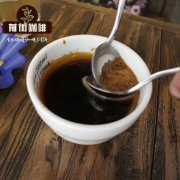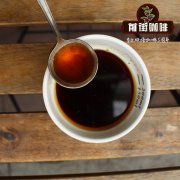Brazilian Coffee Bean varieties Brazilian Coffee characteristics Taste suggestion of Brazilian Coffee

Professional coffee knowledge exchange more coffee bean information please follow the coffee workshop (Wechat official account cafe_style)
Brazil is a big coffee producer, and a large number of Europeans emigrated to Brazil to find suitable places to grow coffee. until today, there are a large number of coffee gardens in Brazil, which are sold all over the world. Brazilians have also developed the habit of having a cup of coffee every day since childhood.
There is no doubt that the coffee industry is one of the most important economic industries in Brazil. Brazil is also one of the leading coffee producers in the world and has a place in the boutique coffee market in recent years. Coffee varieties produced in Paran á, Espirito Santos, S ã o Paulo, Minas Gerais, and Bahia and other regions include bourbon, Tibica, Kaddura and New World.
Almost all espresso contains Brazilian coffee, some even 90% are Brazilian coffee, and Brazilian coffee is also found in many well-known mixed coffee brands and canned coffee, which shows how important Brazil plays in the coffee industry. Although Brazilian coffee is widely found in the commercial coffee market, it does not mean that Brazilian coffee can not be included in the boutique market. Brazilian coffee roasted in deep cities and roasted in Vietnamese style is quite delicious. In addition, good sun and honey treatment of Brazilian coffee is often a fixed team of mixed concentration, with more fat, mellow taste and sweetness, which is a strong foil to the mixed coffee.
Brazilian coffee is also a regular in blending coffee ingredients and acts as a skeleton in a cup of coffee. Most Brazilian coffee flavors are gentle and solid, like roasted hazelnuts and cream, with a low sour taste, a long, light finish and a smooth texture. Japanese people like deep-roasted Brazilian coffee very much, so Japanese brands of instant or canned coffee will drink typical "Brazilian flavor".
Brazilian coffee is wild, sweet, low-sour, bitter in sweetness, and roasted with chocolate, but its raw beans are not dense and its growth is not as high as that of Central American coffee beans, so it brings a bit of bitterness when roasted very deep. In addition, three different treatments also give Brazilian coffee a varied flavor. The sun has a mellow taste, chocolate flavor, and a little fruit aroma, and may also have a little rural soil flavor. Honey treatment is when the outer pericarp is removed, covered with endocarp and pulp, as for the sun on the terrace or elevated bed, the coffee flavor is like the completely natural sun method, but the taste is clearer. The semi-washing method uses a pulp removal machine to remove the peel and some or all of the pulp, so the semi-washed flavor has the characteristics of honey treatment as well as the characteristics of water washing, clear, balanced, thinner taste, less chocolate and bright acidity.
Coffee experts generally do not think highly of Brazilian coffee beans, thinking that they are too monotonous, bitter, sour and fragrant enough, and are not even included in the list of producing areas of fine coffee. Because most of the Brazilian coffee gardens are below 1200 meters above sea level, there are no shade trees, and the way of picking beans is rough, and the raw and ripe fruits are picked together, which does not meet the conditions of fine coffee. With the exposure tree planting method, the coffee fruit grows faster, so that the flavor is not completely developed, and there is still a smell of wood, which can not be elegant. It is also because over the past 20 years, Brazil has tried to expand its market share, replacing manual bean picking with mechanization and increasing output, but it has affected the quality and destroyed the due flavor, because only the harvest of red ripe fruit and careful handling can highlight the flavor of boutique coffee. In recent years, the Brazilian Coffee Association has vigorously promoted reforms in order to survive in the fierce international market. among them, the raw beans of Fazenda Rainha, a Brazilian boutique coffee farm, were bought at a high price by Soberg & Hansen, a well-known Norwegian bean baker and raw bean import company. There has been a lot of discussion in the global coffee industry, because the price of Brazilian coffee beans has never been so high, and it has shaken off Brazil's notoriety of not growing good coffee.
Brazilian coffee processing method
80% of Brazilian coffee is dried, and the remaining 20% is semi-dried and washed. Its coffee taste characteristics are different, but high-quality coffee slightly tends to use semi-dry treatment. However, the drying method still has a deep-rooted popularity.
Qianjie suggestion [Brazilian Coffee] suggestion:
V60According to one minute and fifty seconds, V60According to 15 ℃
Flavor: chocolate, creamy peanut, Xuanmi tea
Qianjie coffee: Guangzhou bakery, the store is small but a variety of beans, you can find a variety of unknown beans, but also provide online store services. Https://shop104210103.taobao.com
Important Notice :
前街咖啡 FrontStreet Coffee has moved to new addredd:
FrontStreet Coffee Address: 315,Donghua East Road,GuangZhou
Tel:020 38364473
- Prev

Brazilian coffee beans Brazilian coffee taste how to make Brazilian coffee Brazilian coffee flavor
Professional coffee knowledge exchange more coffee bean information please follow the coffee workshop (Wechat official account cafe_style) in addition to Colombia, another coffee country in South America is Brazil. Brazil is the world's number one coffee producer, producing 2.6 million metric tons last year, accounting for about one-third of the world's output. However, coffee experts generally have a low opinion of Brazilian coffee beans as too monotonous and bitter.
- Next

How do you drink Dominican coffee? what is the variety of Dominican coffee?
For more information on coffee beans, please follow the coffee workshop (Wechat official account cafe_style) the Dominican Republic (Dominican Republic) has the reputation of a paradise touched by the Caribbean trade wind, because it is located to the east of Island of Hispaniola, the second largest island in Central America and the Caribbean (west of the same island is the Republic of Haiti).
Related
- Detailed explanation of Jadeite planting Land in Panamanian Jadeite Manor introduction to the grading system of Jadeite competitive bidding, Red bid, Green bid and Rose Summer
- Story of Coffee planting in Brenka region of Costa Rica Stonehenge Manor anaerobic heavy honey treatment of flavor mouth
- What's on the barrel of Blue Mountain Coffee beans?
- Can American coffee also pull flowers? How to use hot American style to pull out a good-looking pattern?
- Can you make a cold extract with coffee beans? What is the right proportion for cold-extracted coffee formula?
- Indonesian PWN Gold Mandrine Coffee Origin Features Flavor How to Chong? Mandolin coffee is American.
- A brief introduction to the flavor characteristics of Brazilian yellow bourbon coffee beans
- What is the effect of different water quality on the flavor of cold-extracted coffee? What kind of water is best for brewing coffee?
- Why do you think of Rose Summer whenever you mention Panamanian coffee?
- Introduction to the characteristics of authentic blue mountain coffee bean producing areas? What is the CIB Coffee Authority in Jamaica?

